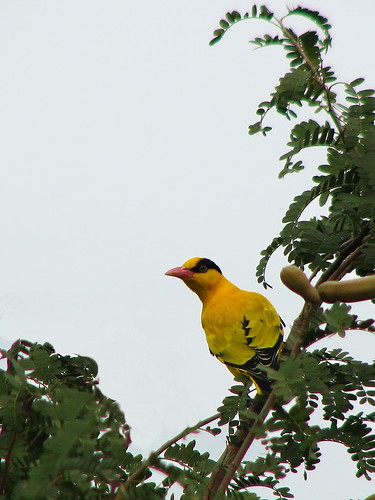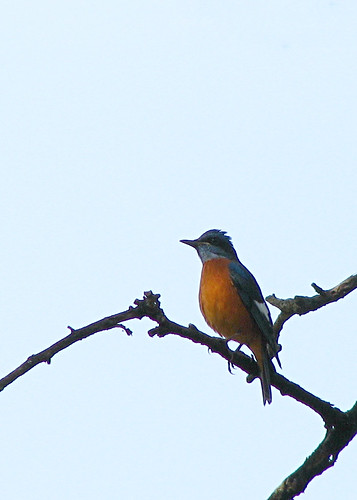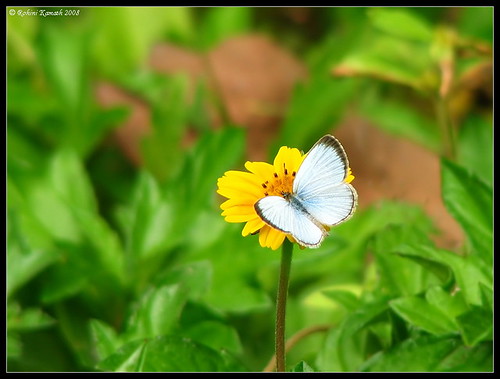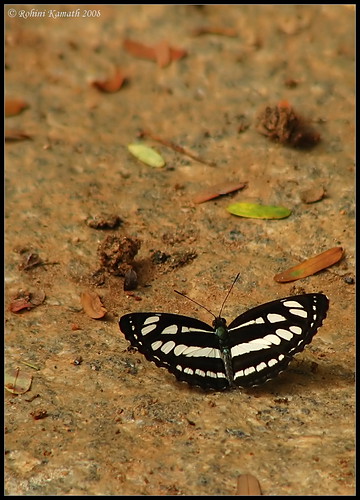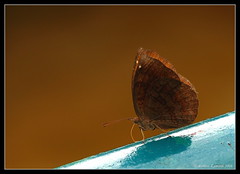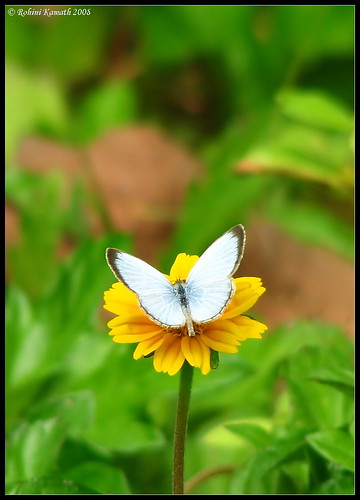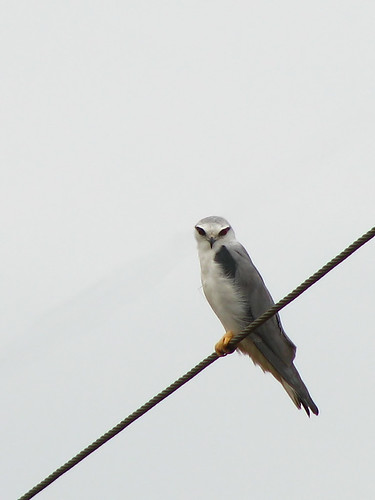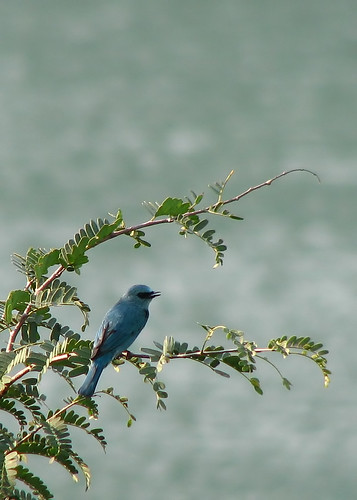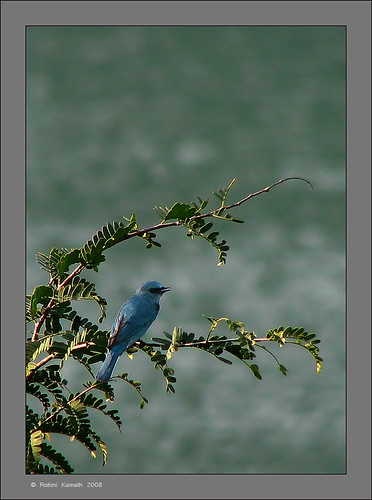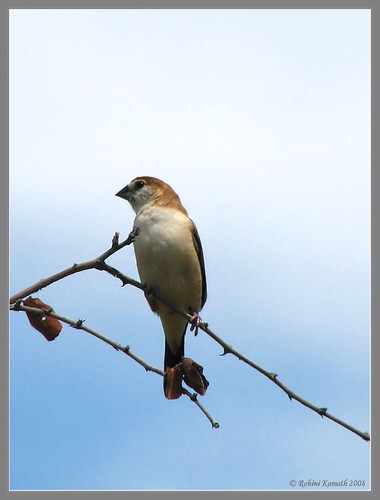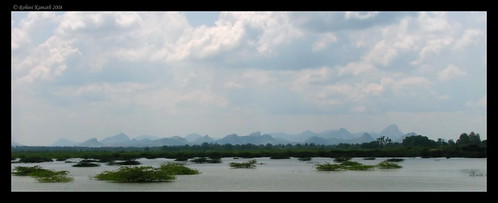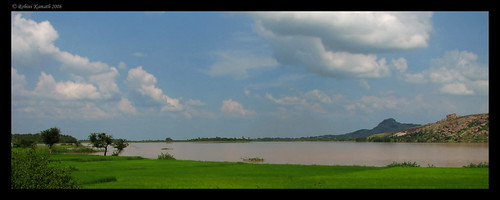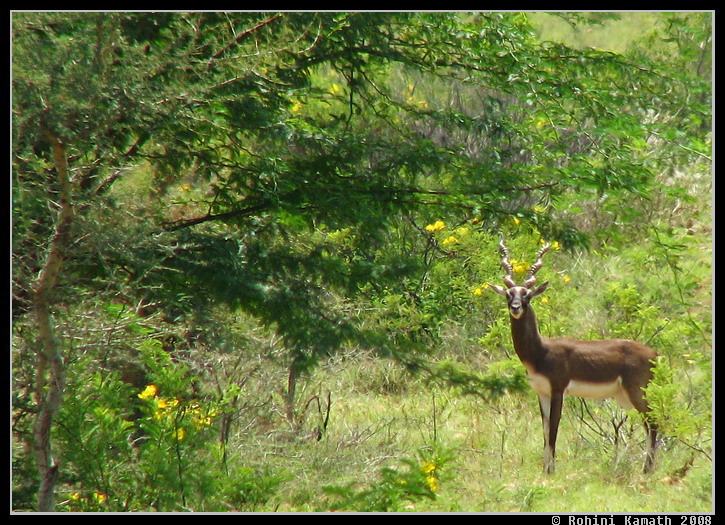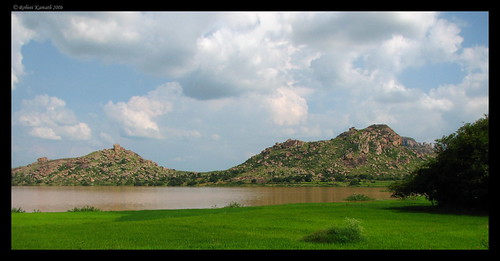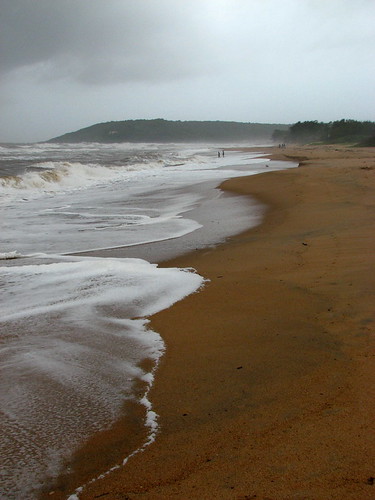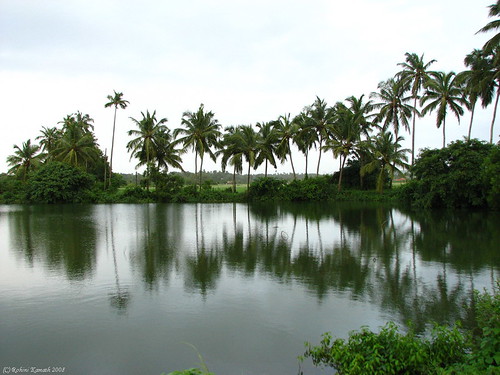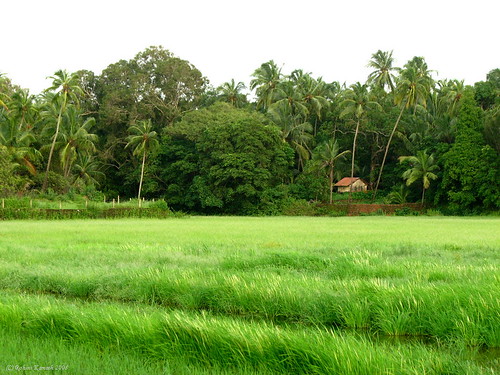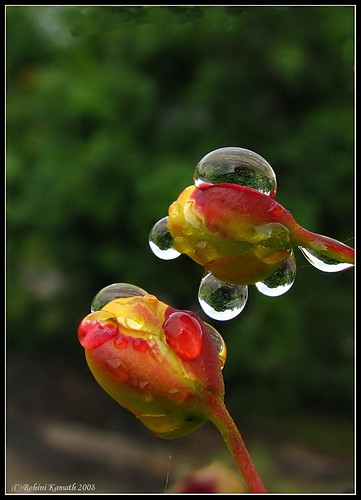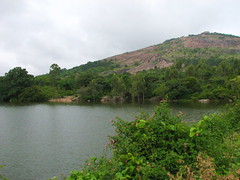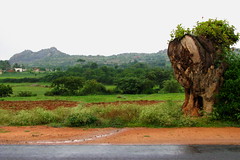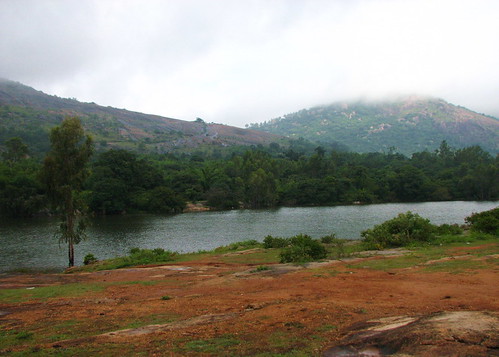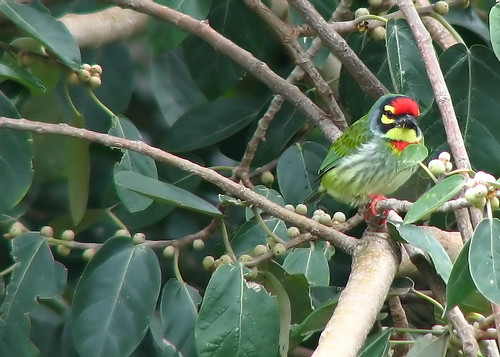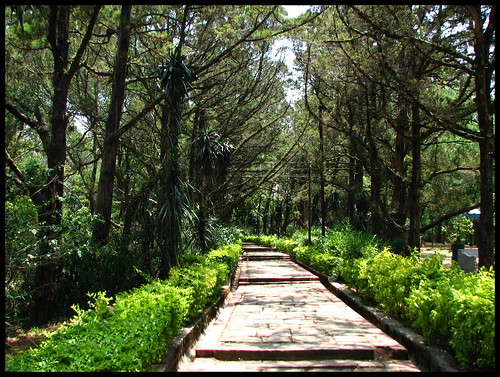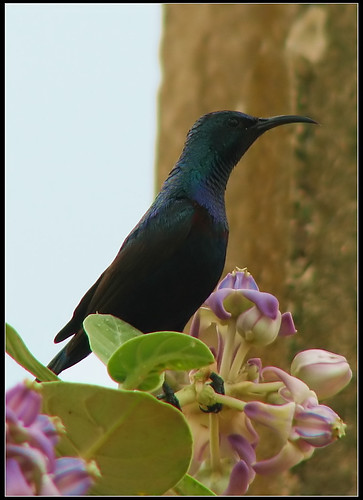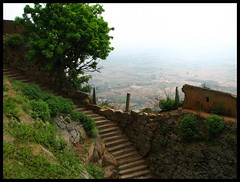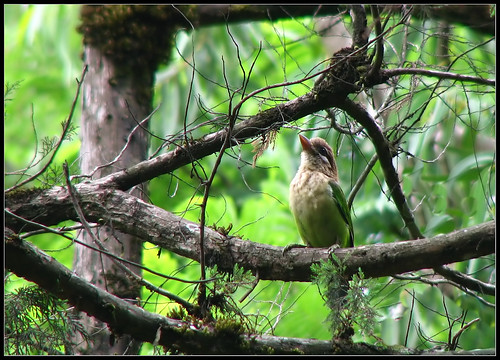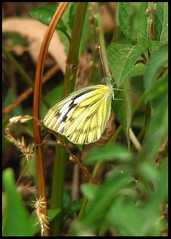
Given the holidays we had around Christmas, Keshav and I planned a short migration of our own to the Western Ghats. We decided to drive down to BR Hills.
This was our first long drive, by ourselves, so to be safe we thought we'd better do our research and make sure the car is in good health as well.
I googled extensively to find a convenient list of items to be carried along on such road trips. My searches yielded results intended for people driving across states/countries, lists for traveling with small children and some very girly list of must have cosmetics and how to fit as many outfits as possible into a small bag. We finally sat down and compiled a list on our own, taking some help from our colleague Ravi ( who travels extensively by car, interstate)
I thought it might be useful to post the list of what to carry on such road/jungle trips.
Ravi's Comprehensive List
1. Flashlight + batteries
"Britelite" brand with rechargeable batteries (comes with a single LED bulb) and lasts for 3 - 4 hours once charged for 8 hours.
Its a little expensive but worth it if you plan to keep doing trips. Available in majestic area in quite a few shops.
There are several models. We bought the "Ezkort" model.
There's another brand called "MAGLite" which is equally good/better. Not easily available in Bangalore though.
2. First Aid Kit
Ensure that this has: An antiseptic liquid like dettol, bandaids, cloth used for covering wounds, cotton, tablets for headache, Dolo650 (for fever),
maybe one round of antibiotics (Amox - 500mg - about 9 of them).
3. Thick Nylon Rope
Useful to tow your car incase its required or while climbing or in slippery areas. Lots of uses. Can keep it in car and if not used, its okay.
4. Map of Karnataka
TTK has a good one. Or you can buy the Eicher road map. Its very good.
Additions:
1. Good binoculars (military grade is also available in the same store as where the Canon 350D was got).
2. Its going to be cold in the mountains in the night. Carry warm clothes. Shoes which cover ankles (incase you are going to walk).
Cotton/ear plugs to cover your ears (to shut out the cold wind) or a monkey cap.
3. Carry drinking water. Budget about 1.5 litres of water per person per day. You can get 10 litre water cans. You can also have one litre water bottles
with big mouths so that you can refill easily from the water can.
4. Plenty of fruits (like apples, oranges). Knife (or a swiss army knife if you have one).
5. Toilet paper rolls.
6. Backpacks - to carry water bottles, fruits, knife, flashlight while walking.
Some tips on driving:
1. Every 2 - 3 hours take breaks while driving and stretch out. If you feel sleepy, pull over and take a break.
2. Don't mess around with trucks, buses on the highways. If they want to overtake, let them go.
For the Car:
1. Check the airpressure for all tyres (including the spare one in the dicky). If you have tubeless tyres, carry a puncture kit.
Usually in the driver's side of the car door, the recommended airpressure for the front and rear tyres are mentioned.
For the spare tyre, add a few pounds more.
2. A spare tube (if your car has tubed tyres).
3. Ensure that you have the 24 hours emergency number of your car Manufacturer. They have a toll free number but based on the location, they do have local numbers
available. This should be there in the car's service manual.
The nearest Hyundai service point (in case you need to take your car there).
Not mandatory but if you can do these for the car, it would be good ......
1. Get the air filter cleaned. It takes a few minutes to get this done.
2. Replace car's headlamp bulbs with Philips Halogen (90/100w), 200w dc cutout. This should take about half an hour.
3. I am assuming that you've got the engine oil, gear box oil, coolant etc... changed and these don't need attention.
Our Brief List
Clothing
Jackets + Pullovers (layering is good, jackets are handy since they have pockets and hoods)
Extra Pair of Clothing ( Just In case )
Extra shoe pair + Extra Socks ( In case they get wet - this has happened)
Hat/Cap/scarf/muffler/gloves
Sunglasses with hard cases
Led flash light (strap on/pocket size)
Basic Toiletries
Shampoo sachets (to avoid spills from bottles)
Body Lotion / Cold Cream
Toothpaste + Tooth brush
Paper soap / Facewash
Moisturiser + Lipbalm
Wet Tissues (for dusty roads)
Sunscreen
For the visually challenged
Contact lens extra pair + solution
Hard Spectacle case + glasses
Camera Chk List
Equipment cleaned, settings set to normal
Cards erased
Batteries charged
Chargers + cord
Tripod(s)
1 plastic bag in each camera bag to protect from rain
1 soft lint free cloth to clean lenses.
Phones charged + chargers
Binocular(s)
iPod charged + cord
Mp3 player + batteries
FM transmitter + batteries ( for the Car )
CDs
Car Carry ons
1. Torch with batteries
2. Torch LED - rechargeable
3. Nylon Rope
4. Spare tyre with pressure checked.
5. Jack and other tools
6. First aid kit (dettol, bandaid, cotton, paracetamol, painkillers)
7. Tissues (use these to wrap around chewing gum and dispose safely)
8. Map
9. Water Bottle
10. Notebook + Pen
11. Outlook traveller and / or Times Food Guide :)
12. Bird book
13. 1 pair Scissors / Swiss Army Knife
14. Towel ( Remember the Hitchhikers Guide to the Galaxy :) )
15. Full Tank and car serviced
16. Drivers licence, photocopies of vehicle documents (We never carry originals)
17. 1 small backpack
18. Plastic bags, large heavy duty ones - incase your purchases of souvenirs dont fit in your luggage. My Mom also uses these to pick up any plants she can find :)
19. News Paper to line the floor/ dispose off fruit peels /etc
20. Umbrella
Carry suffient Cash (for fueling in small towns) with enough Change
Carry at least one Debit/ATM card. Dont carry too many cards.
iMint card + Credit card - useful for fueling in cities (no harm in earning points)
Food
Nutrition Bar ( if you want to be healthy)
Chocolate Bars
Biscuits / Crisps
Fruit - take something that wont spoil easily.
Medium size Water bottles ( as needed )
ButterMilk / Flavoured Milk tetra packs /Caffeinated beverage cans
Disposable Thick Plastic cups (Paper cups if you want to be Eco-friendly)
Note: Avoid the thin plastic cups, they cause spills if held too tightly.
Buying very large bottles of water is not advised for short trips, its heavy to lift and lug around in case you need to. More flexibility is achieved with smaller bottles.
Pls do not litter, help keep nature pristine. Keep a garbage bag in the car to collect the trash and dispose in a proper dustbin at hotel/home/on route. Pls drive safely.
For those who are interested, the Trip report of BRHills will follow shortly. Pls consider the picture at the top to be a preview :)
If you liked this post or have suggestions or criticisms to provide, pls leave a comment. You can also subscribe by RSS or email.



